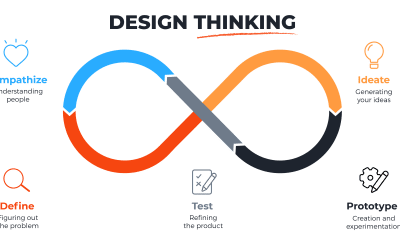Trying to convince customers you have the best quality, integrity, or customer service may be a losing battle. Here’s an alternative to consider.
As part of our branding practice, we often work with clients to identify (or overhaul) their company’s core values.
The biggest problem we see is that companies habitually choose the same core values over and over again. We call them “The Defaults.”
We actually conducted a study of the values statements of hundreds of companies, and identified the most common values listed:
- Integrity
- Respect
- Innovation
- Teamwork
- Excellence
- Customer focus
- Trust
- Diversity
- Accountability
- Openness
- Quality
- Honesty
- Passion
- Safety
- Community
- Service
- Collaboration
- Responsibility
- People
- Commitment
You’ll notice that most of these are things everyone agrees on. There aren’t many companies out there that are really passionate about core values like “lack of integrity,” “disrespect,” “poor quality,” etc.
And yet, when business owners work on defining their own core values, they keep listing the exact same words that actually do very little to differentiate them from anyone else.
This is actually perfectly natural. When you’re deeply invested in a business, especially in the early years, you have to really believe in what you’re doing. That dedication unfortunately tends to manifest itself as a demonization of your competitors; consciously or unconsciously, you’ll tend to slip into the assumption that the “other guys” are a bunch of either disreputable villains or talentless hacks (or sometimes both).
You almost have to believe this to keep going. You never say “We’re the 4th best in the market.” It’s always “We’re the absolute best there is! Our quality is unsurpassed, and our customer service is amazing.”
Unfortunately, the other guys all believe the same thing about themselves. The actual customer is hearing the same message from everyone, and they’re thinking “Customer service, yeah, yeah, but what makes you different?”
Nobody wants to hear you talk about your customer service (or your quality, or your integrity, etc.). This is one of the most basic rules of marketing. It’s not because these things aren’t important—they are!—but because they’re entry-level expectations, and are therefore assumed unless you give them reason to believe otherwise. They don’t make you great, they just make you not an immediate failure. It’s like telling your customers that you brushed your teeth and put on clean underwear this morning. Not only are they not impressed, they’re probably confused as to why you felt like you even had to bring it up at all.
Often, attempts to base marketing on The Defaults come across as defensive damage control. When the newspaper reveals a company as having the worst service in their industry, that’s when they start talking about customer service in their ads. When a product gets recalled, you suddenly start seeing a lot of quality-related promotions from the manufacturer. Don’t fall into the trap of sounding like you’ve done something wrong by trying to promote how competent you are at the basics.
The Defaults are also a terrible way to position your company, because every one of your competitors thinks they’re great at the same thing, making it impossible for your customers to actually tell the difference. Even if you are the best, there’s still no marketing equity in talking about it. It just doesn’t resonate with customers.
Your point of uniqueness must be something your competitors won’t also claim. Every business owner wants to shout “But really, we are the best!”, and it may well be true, but there’s still no marketing juice there. Skip the Defaults and figure out what actually makes your company unique.
There’s always something deeper, something more interesting. That’s where the magic is. Push through the obvious answers, and you’ll find that little gem inside that will make all the difference for your company.










